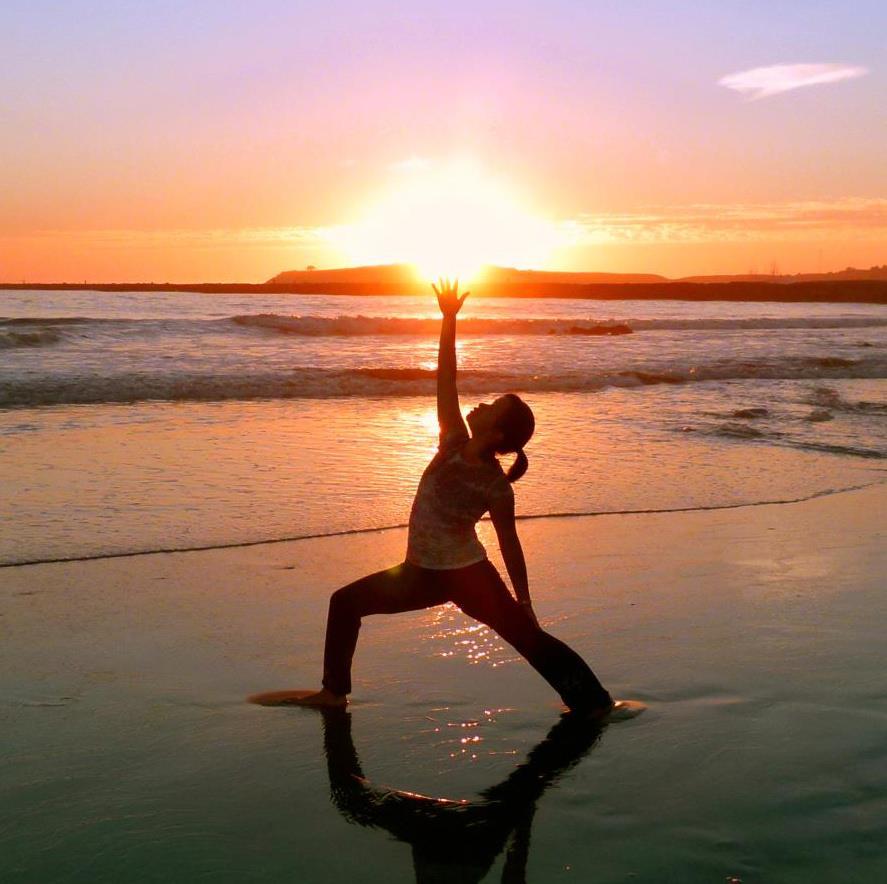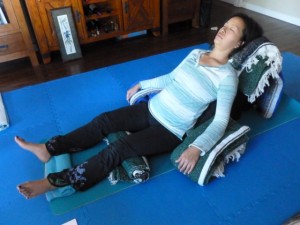 The Native American tradition speaks of each person's Original Medicine - that set of gifts that only you can offer the world with your particular life. I've always felt there was such a finality to the phrase "Original Medicine" - like I had to define the one thing I was here to do, or it would be lost forever.
The Native American tradition speaks of each person's Original Medicine - that set of gifts that only you can offer the world with your particular life. I've always felt there was such a finality to the phrase "Original Medicine" - like I had to define the one thing I was here to do, or it would be lost forever.
No pressure!
This feeling would ignite the achiever in me, who would scramble to come up with a name, a brand, a package, a business, something very "put-together" that would create an image of how well I knew my Life's Purpose.
I've been doing some version of that for most of my life. But recently I've begun to discover a process I find much more alive, much more healing, much more in alignment with my own sense of unconditional wholeness. I call it "Live Your Medicine." It is the practice of asking, "What time is it now, for me?". It involves listening for what holds the most fear for me in this moment. And then summoning the courage to take action toward that in one small way. Again and again, revisiting and refreshing with each present moment.
It is reminiscent of Eleanor Roosevelt's words:
"You gain strength, courage, and confidence by every experience in which you really stop to look fear in the face. You are able to say to yourself, 'I have lived through this horror. I can take the next thing that comes along.' You must do the thing you think you cannot do.”
How often do we actually avoid - quite skillfully - the things that spark fear inside us? How often do we explain away these avoidances with elaborate theories, often quite impressive in their defense of our own status quo?
"Live Your Medicine" captures my emerging discovery that the true healing experiences for me happen whenever I do something that is utterly frightening to my mind's unquestioned beliefs. "Live Your Medicine" is an invitation to search inside yourself to find your edge, and to live in a way that develops your courage, rather than reinforcing old patterns, no matter how comfortable they seem.
For example, each morning for most of my life, I would begin with a "To Do" list - my responsibilities and things to get done. There was no reason for me to get out of bed beyond that list. It served as my purpose. There was no rhythm other than the methodical ticking off of items, showing up for scheduled activities, and getting through things.
Everything in my life changed when I made one seemingly small shift: I began my days differently. Instead of hopping out of bed and beginning to run after my "responsibilities" dutifully, I stepped off my bed and sat in silence, looking out a window at the sequoia tree stretching tall in front of it. I started with five minutes. I did yoga, not when the yoga studio scheduled a class, but when I needed it - sometimes first thing in the morning - and for the length of time my body required it - sometimes only twenty minutes.
Since then, I have maintained a practice of beginning my days with rituals that ground me in my connection to breath, body, and the earth. I am currently blessed with the situation of living just fifty steps from the beach. Most mornings I make the walk out to the bluff, and down to the sand where the birds pace along the water's edge. I wake up gradually, following the pace of the sun's creeping over the fog-covered hills to reveal the glistening surface of the ocean.
I notice, though, that even this ritual can drift into feeling of an "assignment" I give myself. I can fall back into a pattern of giving myself a job - even if that "job" is to start my day more kindly. My practice can harden into a set of rules that I must follow, or else be judged as something less than acceptable to myself. Not very kind!
My mind can turn any practice into a "To Do". It's just a repetitive pattern - a habit that was practiced for many years, and reinforced without questioning.
So my medicine is to "do the thing I think I cannot do". To be attentive to what that thing is, in this moment. And then do it.
I recently learned some simple restorative yoga poses from a friend. No need for the fancy bolsters, blocks, straps, and blankets that I've used in yoga studios. I can use pillows, blankets, and whatever else I have available. The experience is like floating - like my entire body is being supported, almost suspended, without any effort from my muscles. It's like being in water, without having to move at all.
And it's a totally ridiculous way to start the day! Which is why it's my medicine. Living MY medicine, at this particular point in my life, means having the audacity to begin my day by going into a state of complete surrender and relaxation. As if there is nothing to do, nothing to conquer, nowhere to be.
This is what living my medicine looks like for me, right now:
 While my body floats in the feeling of being totally supported, my mind rests. It cannot feel fear in this moment of rest. And each moment I spend here, I train in courage. I look fear in the face - the fear that whispers a "To Do" list in my ear - and I do nothing anyway.
While my body floats in the feeling of being totally supported, my mind rests. It cannot feel fear in this moment of rest. And each moment I spend here, I train in courage. I look fear in the face - the fear that whispers a "To Do" list in my ear - and I do nothing anyway.
What's YOUR medicine right now? What time is it now for YOU?